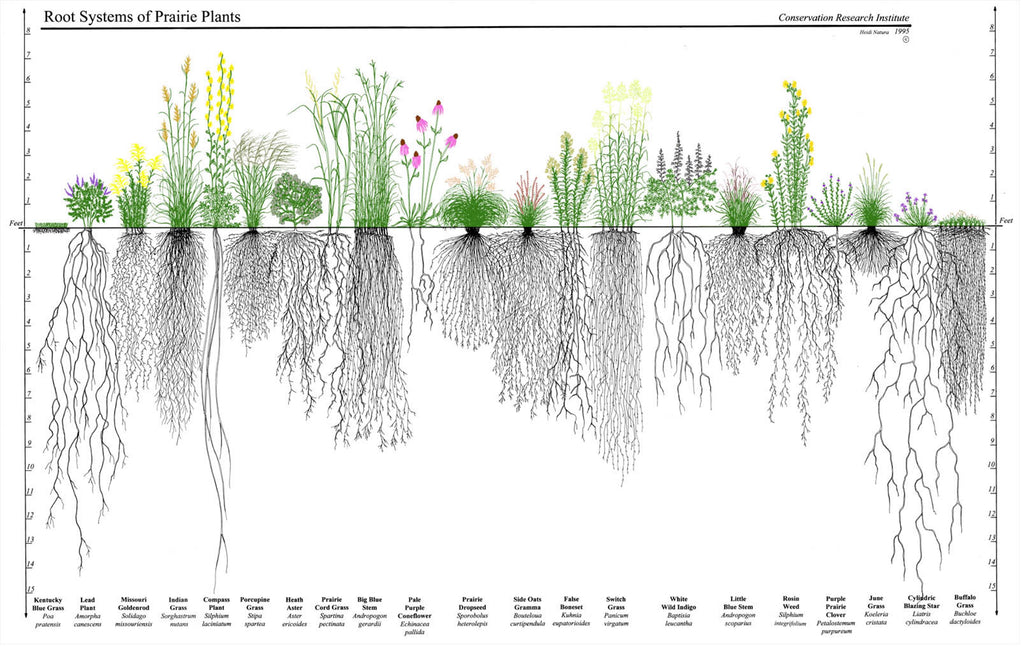We were thrilled to host renowned science-based ecological design and restoration researcher, Steve Apfelbaum, and his firm Applied Ecological Services to study the regeneration and carbon storage happening at Wild Idea’s home ranch. Please see below for an excerpt from his report.
When considering the linkage between vegetation cover and total organic carbon levels, it is important that native grasses and forbs have deeper, and often denser root systems. When these native grasses are grazed aboveground, this results in a die-off of the roots belowground and more (and deeper) accrued soil organic carbon.

At Wild Idea’s home ranch, the O’Briens are doing nearly everything differently than the neighbors. Starting with grazing, which is a major leap backward and forward at the same time. And, extended to restoring native plant biodiversity and productivity. For example, when the neighbors plow up native grasslands or plant invasive mideastern crested wheatgrass, the O’Briens are doing the right thing ecologically by planting little bluestem, side oats gramma, and other native species that will support and jump start other life on the prairie, including the bison herd. The combination of right things will also rebuild the soils and soil carbon levels!
Similar analysis we have completed about 50 miles to the north of Rapid City, in similar soil types, suggest that the Wild Idea ranch has higher levels of soil carbon. Sampling in one abutting cattle ranch where the Wild Idea Buffalo are winter grazed, in one comparable soil type, suggests the Wild Idea ranch has significantly higher soil carbon levels.
Clearly, the Wild Idea ranch is on a trajectory focused on restoring soil health, or keeping soil healthy, which can help reverse climate change.
